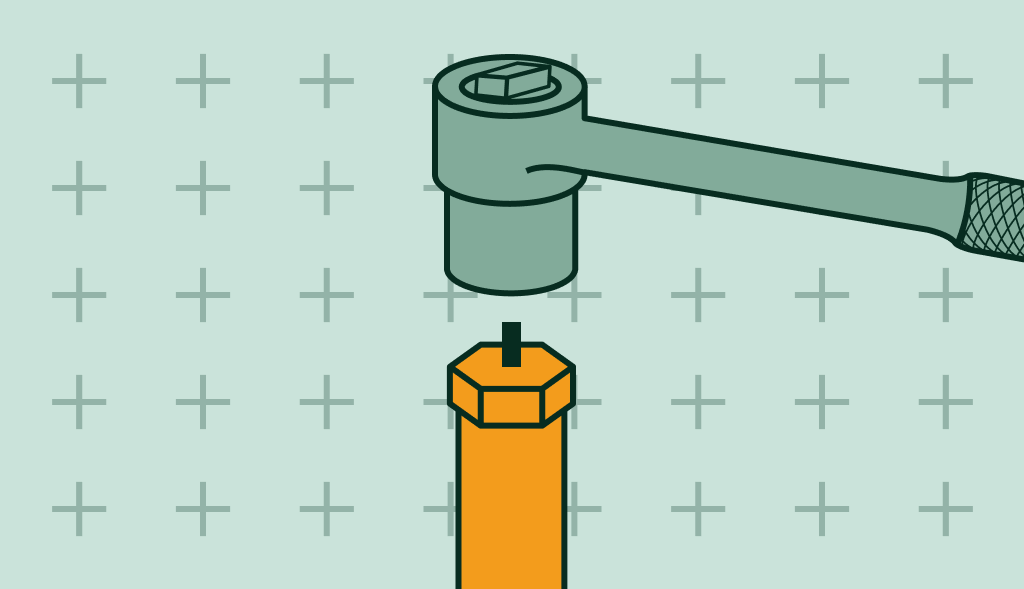Anode Rod Socket Size: Quick & Easy Guide

Anode rods are very important in all water heaters. They keep the water tank from rusting, so your heater can last longer. But, sacrificial anode rods don’t last forever. After a while, you need to change them. To do this, you need to know about the anode rod socket size.
Anode Rod Socket Size in Different Water Heaters
Different water heaters need different socket sizes for their anode rods.
Regular Water Heaters: Usually 1-1/16 inches
Most regular water heaters anode rod socket size of 1-1/16 inches. Many makers use this size, so it’s easier for you to find the right tools. To change the anode rod, you’ll need a socket wrench or a breaker bar that fits this size.
A socket wrench is handy and easy to use, making it simpler to loosen the rod. A breaker bar can give more force, which is helpful if the anode rod is really stuck. But remember, not all water heaters use the 1-1/16 inches size. It’s a good idea to check your water heater’s guide to make sure.
Bradford White Water Heaters: They’re a Bit Different
Bradford White water heaters have a special type of anode rod. It’s built in a different way to protect the heater better and make it last longer. But because it’s different, you need different tools to change it.
Instead of a socket wrench or breaker bar, you need a pipe wrench for these anode rods. A pipe wrench is tough and can change size. It’s good for this job because it can hold onto the rod firmly and give you the force you need to get it out.
Powered Anode Rods: A Bigger Size
Some water heaters use powered anode rods. These rods are a bit different and usually need a bigger socket size to remove. A good example is the Corro-Protec model. Instead of the regular 1-1/16 inch socket, you’ll need a larger 1-3/16 inch socket for these rods. The larger size helps to effectively remove the powered anode rod, ensuring your water heater is well-maintained and continues to provide a steady stream of hot water.
RV Water Heaters: Depends on the Brand
If you have an RV water heater, the socket size can change based on who made it. Knowing the right size for your heater makes it easier to change the anode rod.
Suburban Water Heaters: Regular Size
Many people with RVs use Suburban water heaters. These heaters use the regular 1-1/16 inch socket size. With a socket wrench or breaker bar that fits this size, you can remove and replace the anode rod well.
Atwood Water Heaters: A Bit Smaller
Atwood water heaters need a 1-inch socket for the anode rod. This is a bit smaller than Suburban heaters. Because it’s smaller, you need a different set of tools. You’ll need a 1-inch socket wrench or breaker bar to change the anode rod in these heaters.
No matter what brand of RV water heater you have, always check the guide or ask the maker to make sure you know the right socket size. By knowing this, you can take care of your water heater better and keep getting hot water while you travel.
Tools You Need to Change Anode Rods
To change an anode rod, you need certain tools. Even though the socket size can change, some tools are always needed.
Socket Wrench, Breaker Bar, or Impact Wrench
You’ll need a socket wrench or breaker bar to take out the anode rod. The usual size is 1-1/16 inches, but it can change based on the heater. If the anode rod is really stuck, an impact wrench can help.
6-point VS 12-Point Socket
Whether to use a 6-point or a 12-point socket often comes down to the specific situation and the condition of the anode rod head. In most cases, a 6-point socket is preferred because it offers a better grip and is less likely to round off the corners of a hex head like the one on an anode rod. This is especially important when dealing with stuck or rusted bolts where more force is required.
A 12-point socket, on the other hand, provides more angles to fit onto the anode rod, which can be helpful in tight spaces or where access is limited. However, it has less surface contact with the anode rod head, and if the rod is stuck or the head is in poor condition, a 12-point socket could potentially slip or round off the corners of the head.
In conclusion, while a 12-point socket can work, a 6-point socket will generally provide a better grip and is less likely to damage the head of the anode rod. Always remember to use the right size socket for the job and apply force evenly to prevent damage.
Teflon Tape
When you put in the new anode rod, wrap teflon tape around the thread. This helps to make sure no water leaks from the tank.
Changing the Anode Rod: Step by Step
Finding the Anode
First, you need to find the anode. It’s usually at the top of the water heater. Sometimes, it’s connected to the hot or cold water pipes.
Loosening the Rod
Once you find it, use your breaker bar, socket wrench, or impact wrench to loosen the rod. Make sure to use the right socket size.
Taking Out and Putting in the Rod
After the rod is loose, take it out of the water tank. Then, put the new rod in. Make sure to use teflon tape on the threads so no water can leak out.
Safety Tips
Before you start, turn off the water heater and let it cool. To be safe, drain the water from the tank. It’s better to do this than to use the relief valve, because using the valve too much can break it.
Conclusion
Having a solid understanding of the correct anode rod socket size is essential when performing maintenance on your water heater. Whether you’re dealing with a standard or RV water heater, the replacement process is similar and requires basic tools like a socket wrench, breaker bar, or impact wrench, and a socket of the correct size.
By learning how to properly replace anode rods, you can significantly extend the lifespan of your water heater, ensuring a reliable supply of hot water for your household needs.
Blog
Water Heater Recirculating Pump : Why And How Does It Work?
What is a Hot Water Recirculating Pump and How Does It Benefit Your Home? Every homeowner knows the inconvenience of waiting for hot water to […]
Troubleshooting: Why Your Hot Water Heater Is Not Working
When you want a warm bath or shower but only get cold water, it can be really annoying. If your hot water heater isn’t working, […]

